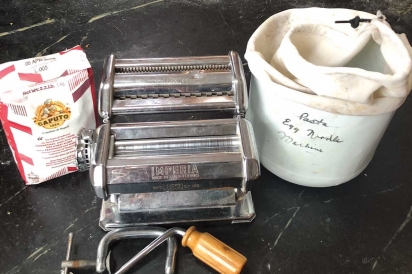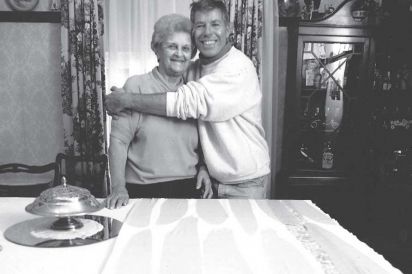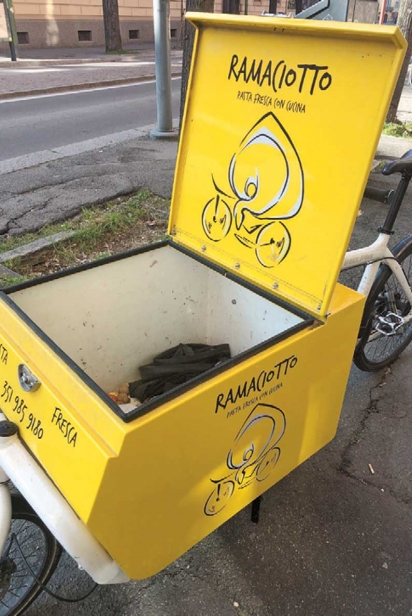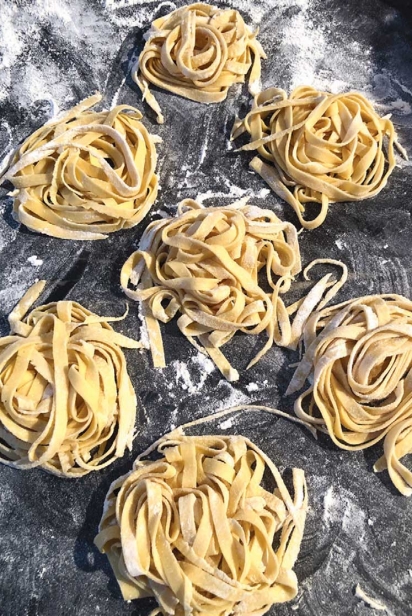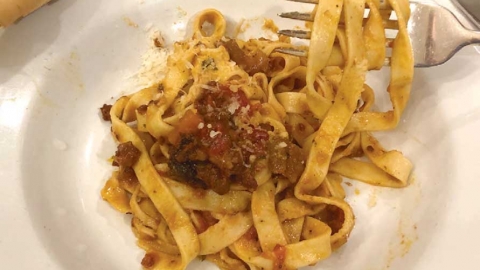Cooking with Carafoli: A Memoir - How I Learned to Make Pasta
I first learned the art of making fresh pasta by hand (fatto a mano) as a young child. My parents and I lived with my Italian grandparents, Luigi and Inez, and my aunt Maria. They migrated from a small village outside Bologna. Like most Italians, they learned how to cook from their mothers, and in turn, they shared their skills with me.
While my grandmother was making pasta, one of my favorite places to hide when I was four was under our old Hoosier cabinet. It was also the favorite spot of Tiger, my grandmother’s big mean striped cat who would scratch me. I would hear her rolling out the pasta and watch some flour falling to the floor. Her pasta dough recipe was simple: flour and eggs, typical of the Emilia Romagna region where she grew up. In Tuscany, a little olive oil and salt is added.
I became interested in food and cooking when I was twelve after my mother’s death. I learned simple recipes from the women in the Italian village of Sagamore.
There was my dear friend Laura Borghi. Laura had style. She was highly creative, made her own clothes, subscribed to Women’s Wear Daily, and sold and delivered Avon products on her three-wheeler bicycle. She was her own person. On holidays, she made her famous recipe for biscotti for me, and we sometimes made pasta together. When she died at the age of 87, one of her relatives gave me her pasta machine (IMPERIA Made in Italy) which she had stored in a cut-off Clorox bleach plastic bottle and, around the rim, she had sewed a white cloth with a drawstring.
I flew to Bologna in my late twenties to learn more about my heritage and Italian food, and I immediately felt at home. I have returned to Bologna many times, sometimes staying for a month to study the language. This past winter, I was there for two weeks, studying and immersing myself in the culture. Every time I go, it brings me back to my childhood. It is friendly and open, and I can eat the food of my childhood.
Basic Pasta Recipe
The Bolognese has the highest regard for tagliatelle, this long narrow noodle. It is perfect with meat sauces like ragu. Cooking fresh pasta takes much less cooking time than dried pasta. When buying dried pasta, look for Italian brands and bronze-cut pasta. The surface is much rougher, allowing the sauce to absorb and stick to the surface.
3 fresh eggs
2¼ cups Italian Tipo 00 flour* or all-purpose flour for dusting the counter
Sift the flour into a large bowl. Then pour it onto the work surface in a mound.
Make a well in the center. Break the eggs into a small bowl and pour the eggs into the well. With a fork, start beating the eggs energetically, gradually incorporating the flour from the sides of the well. If the well breaks and releases the eggs, use a pastry scraper to return them to the flour. When half of the flour has been absorbed, you can form a rough ball. Then start kneading the dough using the palms of your hands, folding it over, and turning it several times. After about ten minutes, it should be a smooth, compact dough ball. Cover the dough with a small bowl and rest for 20 to 25 minutes. Now it is time to roll out your pasta.
* Tipo 00 flour is a lighter flour typically used for egg-enriched pasta in northern Italy. It is used less in southern Italy, where they use heavier flour without eggs, like durum wheat semolina flour for pasta like orecchiette.
Rolling the dough with a pasta machine
Attach the machine to your counter or table.
Use the largest setting on the rollers.
Cut the dough into several long pieces.
Insert a piece of dough into the rollers, turning the handle and passing it through the rollers. Repeat this twice. On the second time, fold the dough into thirds and pass through again.
Move the dial on the side of the machine to the next-smallest notch each time. Sometimes I only do three notches. Continue until you reach the desired thinness of the noodle. Gently pull the layers of dough each time out to their full length after it has passed through the rollers. This stretches the dough.
Repeat this process until you have used all the dough. Dust gently with a bit of flour and arrange into desired portions. It may be cooked immediately or dried and stored in a container.



